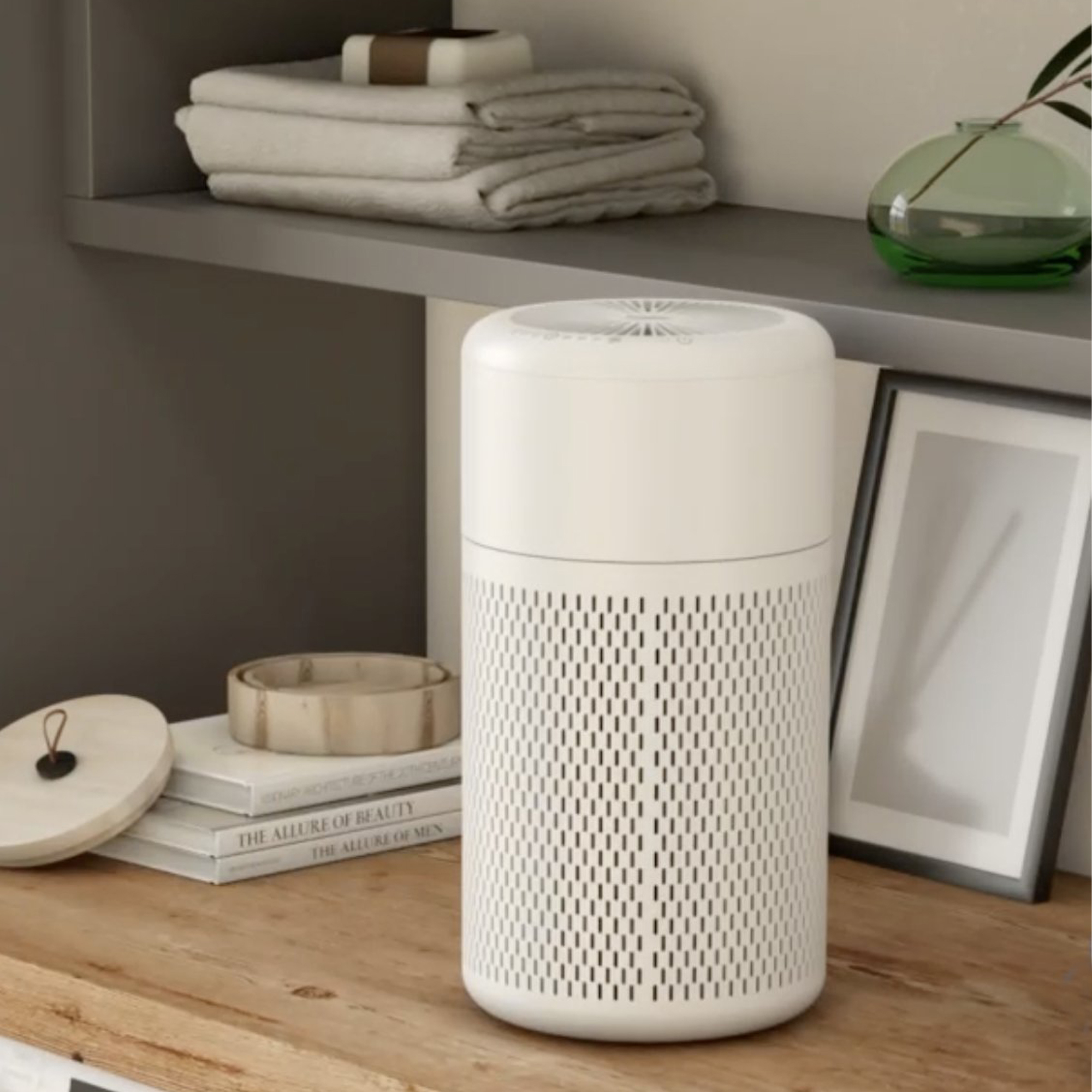
Specifications
How I tested
1. Assembly/set up
2. Design
3. Performance
4. Ease of use
5. Noise levels
6. Portability
7. Energy use
8. Filter replacement
Verdict
If you're looking for a budget air purifier, then this Beko ATP5100I Air Purifier review puts one of the most affordable air purifiers on the market through its paces.
The Beko ATP5100I is a compact and lightweight air purifier with a relatively low CADR (clean air delivery rate) of 110m3/h that's designed for use in spaces under 13m².
In line with its budget price tag, the Beko ATP5100I offers basic functionality with just three fan speeds, a timer that can be set in two, four or eight hour intervals, and an optional ionisation function.
Unlike air purifiers that are two or three times the ATP5100I's price, it doesn't offer a built-in air quality sensor, and there's no automatic or 'smart' functionality. That means that whereas many (more expensive) air purifiers take the hassle out of managing indoor air quality by using a sensor to monitor pollution levels and automatically switch the purifier on and off to maintain optimum air quality, with the Beko ATP5100I it's up to you to decide when to turn the purifier on or off, and you don't get any visible gauge to show you when air quality is improved.
The Beko ATP5100I also doesn't offer any Smart features, so there's no App to give you air quality readings, and it can't be controlled with voice commands via Alexa or Google Assistant.
However, if you're after a budget air purifier, it may be that this additional functionality is something you're willing to sacrifice, so we put the Beko ATP5100I Air Purifier to the test to see how it performed.
Beko ATP5100I Air Purifier review
Specifications
- Recommended room size: 13m²
- CADR: 110m3/h
- Noise levels: not provided
- Filter type: 3-Stage Pre-Filter, HEPA 13 Filter, Carbon Filter and optional Ionisation
- Dimensions: H38 x W20 x D20cm
- Weight: 2.3kg
- Wattage: 10W
- Smart App connectivity: No
- Timer: Yes
-
Auto mode: No
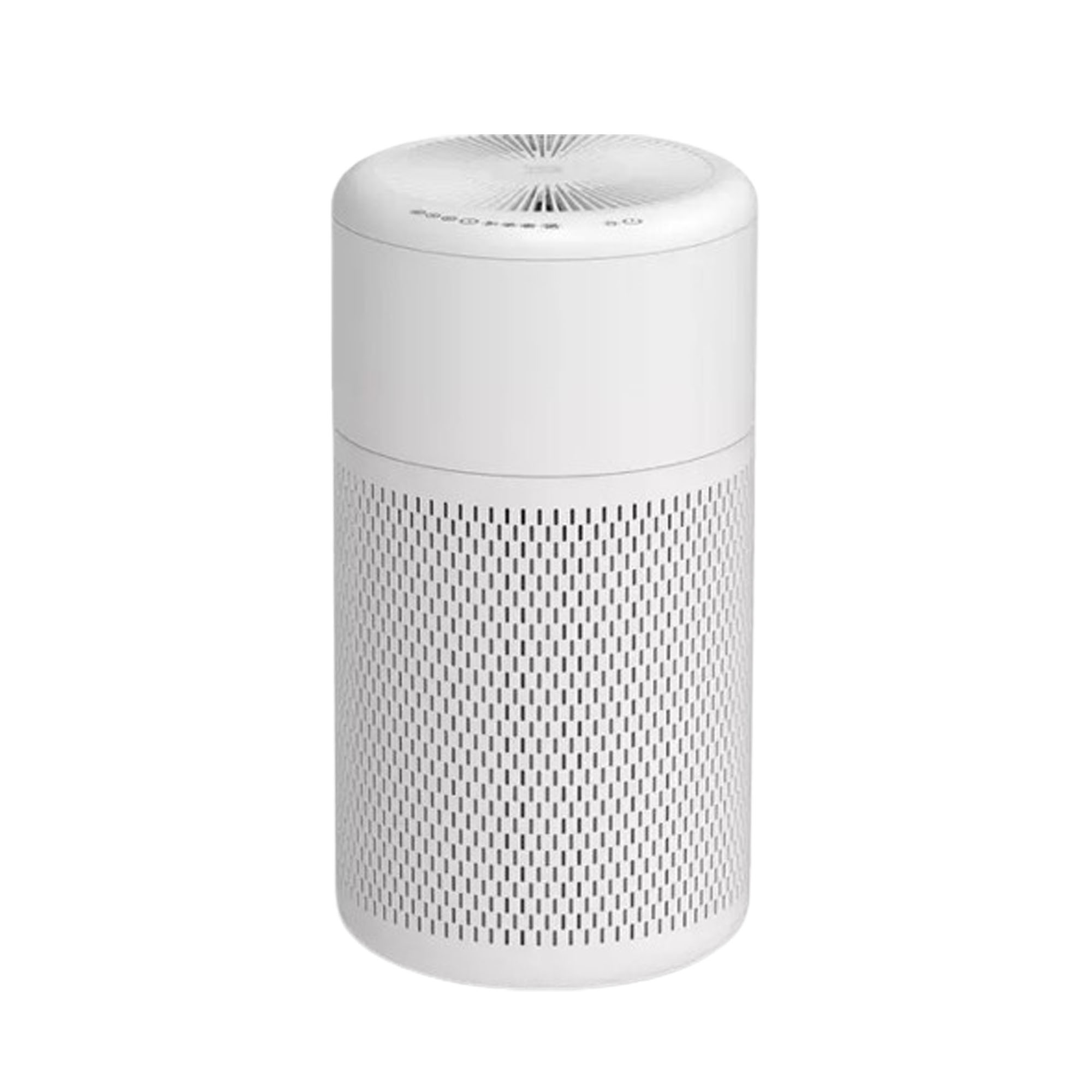
How I tested
Assembly and set up
There's very little assembly or set-up needed with the Beko ATP5100I Air Purifier, you simply need to unbox it, twist off the top section, and remove the PE bag from around the air filter inside the appliance before securing the top of the purifier back into place.
As this air purifier doesn't have Wi-Fi connectivity there's nothing you need to connect, and no Smart Apps to download, all functionality is managed using three buttons on the top of the purifier.
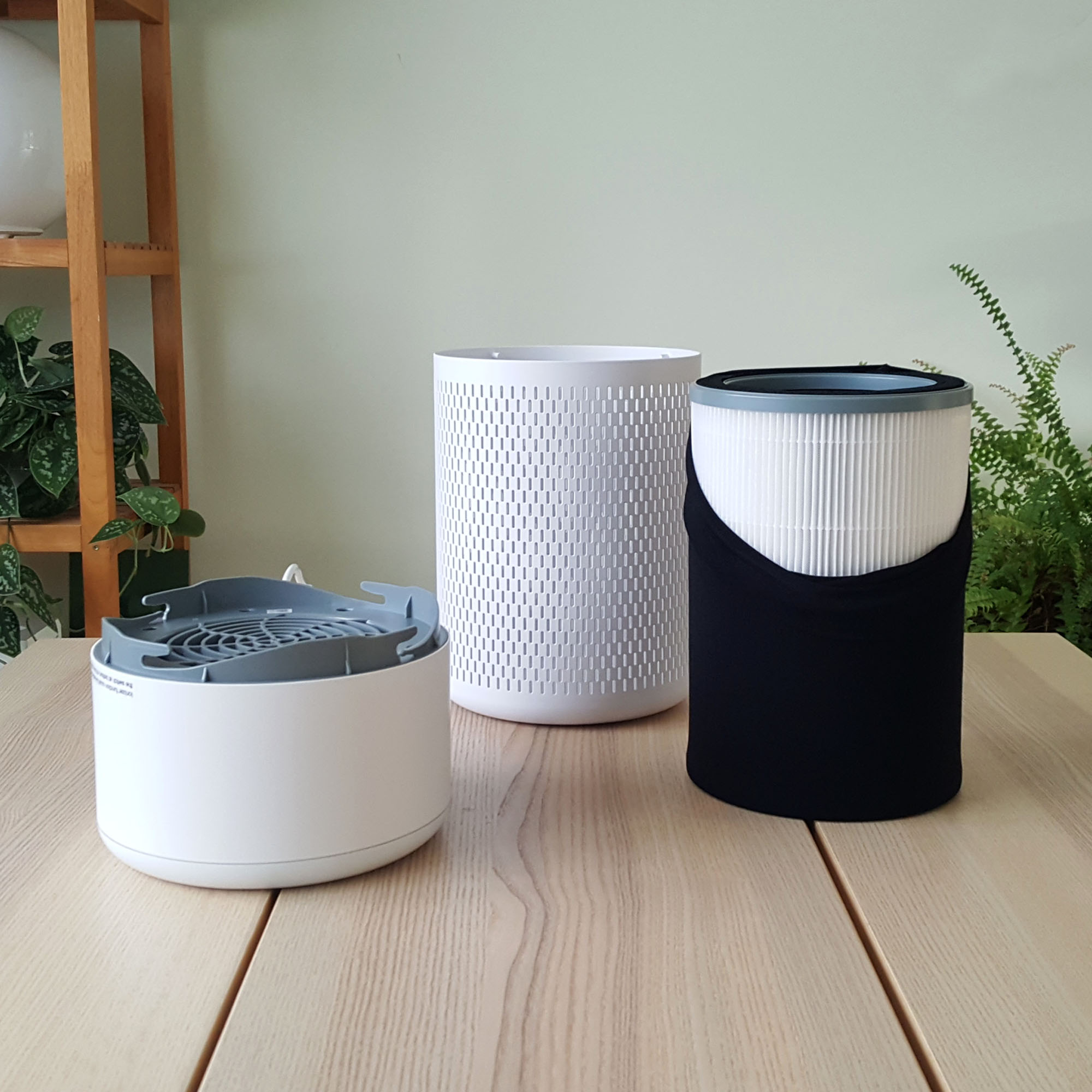
Design
Compared to some air purifiers, the design of the Beko ATP5100I Air Purifier is pretty basic, but its cylindrical form is still pleasant enough to look at, and its relatively compact size means it's pretty unobtrusive in a room.
The lower two-thirds of the air purifier are taken up by the air filter which is housed behind a matt white metal grill with lozenge-shaped perforations to allow the air to flow in.
Filtered air is then expelled via the top of the air purifier, where you'll also find the ATP5100I's three control buttons that turn the air purifier on and off, allow you to set a timer, or alter the fan speed.
The lack of functionality does make the Beko ATP5100I Air Purifier feel more basic than many of its more expensive counterparts, and I definitely missed having a visible air quality indicator built in to the air purifier so I could see what the current air quality was at a glance. But, that reduced functionality is reflected in the Beko's budget price tag.

Performance
The Beko ATP5100I Air Purifier offers a relatively low CADR (clean air delivery rate) of 110m3/h and is designed for use in spaces under 13m², so it's one of the lowest capacity air purifiers I've tested – understandably, as it's also the cheapest air purifier I've reviewed.
It features three fan speeds that you can adjust manually via the controls at the top of the air purifier, however, what it lacks in comparison to more expensive air purifiers, is an automatic mode.
The lack of this feature is what makes the Beko ATP5100I able to offer air purification with a budget price tag, however, to my mind it is quite a big loss in functionality.
An air purifier with an automatic mode uses a built-in air quality sensor to measure the air quality, and then uses this data to automatically control the air purification process accordingly, without user input. For example, if the air quality suddenly dips, then the air purifier will sense this and turn itself on to filter the air and return your room's climate to best possible air quality as quickly as possible.
Because the Beko ATP5100I Air Purifier doesn't have this feature, it's up to the user to determine the air quality level and decide when to turn the air purifier on and off. This can prove tricky, as in practice that either means relying on your nose or your allergies to alert you to a dip in air quality – not always the most reliable method as many airborne pollutants don't have odours. Alternatively, you'll need to leave the air purifier running constantly, which – even though the ATP5100I isn't particularly energy hungry – could still rack up your running costs.
However, one thing that most of us can easily identify is the fumes from frying bacon! So this was the first test I put the Beko ATP5100I Air Purifier through to test its filtration powers.
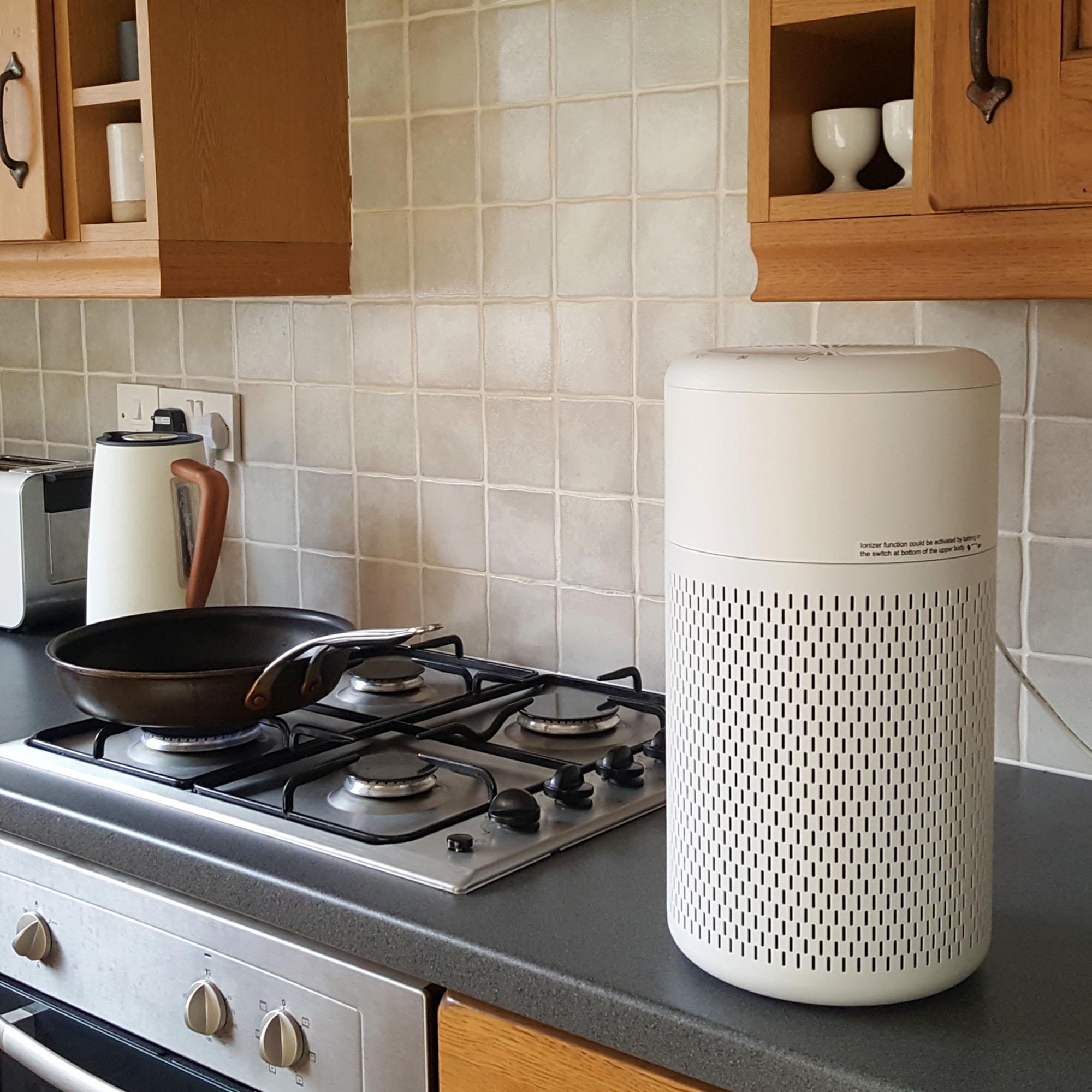
All of the air purifiers with automatic modes that I've tested switched into their highest fan speeds once they'd detected bacon frying fumes, so I gave the Beko air purifier a headstart and began running it on its highest fan speed as soon as the bacon hit the pan.
After about 4 minutes the bacon had crisped up, so I then left the Beko purifier running whilst I tucked into my bacon butty. In previous tests, air purifiers with a built-in air quality sensor showed that the kitchen had been cleared of frying fumes in about 10-15 minutes, so I left the Beko purifier doing its thing for quarter of an hour, and then re-entered the kitchen to see if I could still smell bacon.
Although there was a noticeable reduction in the bacon fumes, there was still a lingering smell in the kitchen – more so than with other air purifiers I'd tested. However, some of this smell also seemed to be a plasticky odour emanating from the Beko air purifier itself.
I plugged in a different air purifier that comes equipped with an air quality sensor to see how the Beko had performed, and the air quality reading came back as 'very good', so the Beko had obviously done its thing with regard to removing any polluting particles, but, to my nose at least, the air in the kitchen didn't smell as fresh as it had when I performed this test with alternative air purifiers.
Beyond the three fan speeds operated by the controls on the top of the purifier, the Beko ATP5100I Air Purifier also features an optional ionisation feature that you turn on by lifting off the top of the air purifier to adjust the on/off ionisation rocker switch. Beko says that this feature 'releases negative ions into outgoing filtered air to help the air purification process'.
I tried the bacon test again, but this time with the ioniser switched on, to see if it made any difference. Again, most of the bacon fumes were removed, and the air quality independently verified as 'good' but still the same lingering smell from the air purifier itself remained.
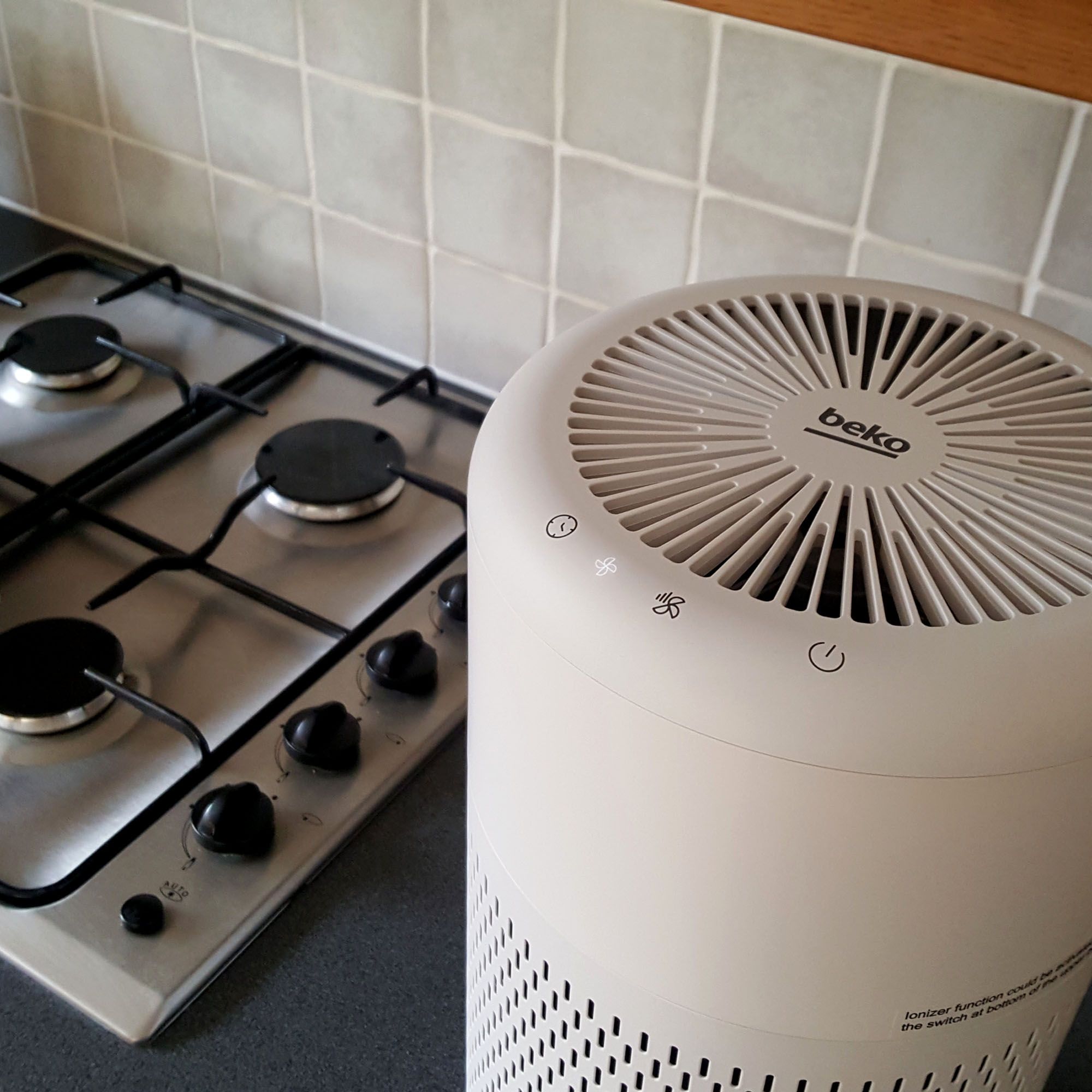
I also put the Beko ATP5100I Air Purifier through our smoke and VOC test, by allowing a match to burn out next to the air purifier and spraying deodrant nearby to see if it removed both odours.
Overall, the Beko ATP5100I Air Purifier did do the job of improving air quality and removing impurities, but, understandably, it was less impressive in its performance than more expensive air purifiers that offer advanced functionality and higher CADR rates.
Ease of use
In terms of its controls, the Beko ATP5100I Air Purifier is very simple to operate because there are only three buttons to the top of the air purifier.
These are touch sensitive and illuminate when selected to show you which functionality is engaged. You simply need to press the fan speed button repeatedly to toggle through the three fan speeds, and the same with the timer button to move through the three timer interval options.
The ionisation on/off rocker switch is more awkward because you need to remove the top of the air purifier to access it, but I presume the idea is you'll only need to decide whether this functionality is one you want to employ once, and then you can leave it set either on or off.
What's less 'easy' in terms of ease of use, is the ATP5100I's lack of a built-in air quality sensor and lack of automatic filtering mode. This puts the responsibility for air quality management onto the user, rather than it being managed by the air purifier itself. An air purifier with an automatic mode will cost more upfront, but, in my opinion, it's well worth it for the hassle-free experience and the improved air quality control.
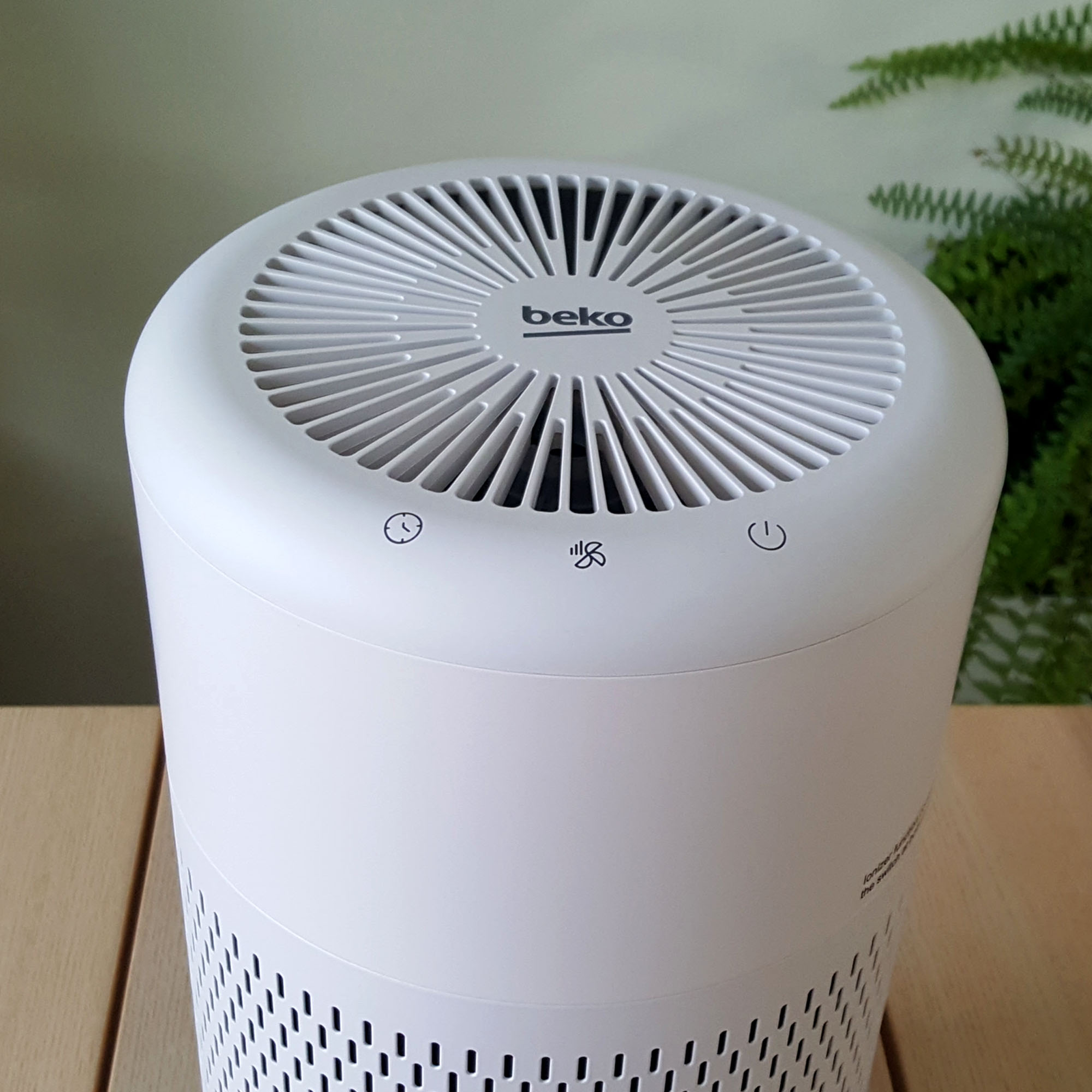
Noise levels
Beko doesn't give any official noise level data, but my ears estimated that despite its compact size, the Beko ATP5100I Air Purifier was one of the noisiest air purifiers that I've tested. It's quiet on its lowest fan speed setting, somewhat noisy on its middle fan speed, and definitely noisy on its highest fan speed setting.
It would be very possible to have it running on its lowest fan speed during the night if you wanted to use it in a bedroom without disturbing your sleep, but I wouldn't personally want to sleep with it on whilst it was operating on either of the faster two fan speeds.
Portability
A compact and lightweight build that measures H38 x W20 x D20cm and weighs in at 2.3kg means this is the smallest, and therefore most portable, air purifier I've tested.
It's a shame it doesn't come with a carry handle, but as long as you're able to grip its cylindrical body with two hands, then it's very easy to move.
Its compact design also means it's great for smaller rooms where you might be short on floorspace as it's small enough to be tucked onto a work surface, desk, or even a shelf as long as there's enough space for air intake from 360 degrees.

Energy use
In keeping with its compact size and low CADR, the Beko has very low energy usage, relatively speaking.
Whereas most air purifiers average 20W-55W of electricity to run, the Beko ATP5100I Air Purifier uses just 10W.
However, sadly that's not all good news. As this air purifer doesn't have an automatic function, that means it's either on or off. So if you want your air quality to be managed continuously that means leaving the ATP5100I running constantly, which isn't a great use of energy and could mean higher running costs.
You can find out more about how much it costs to run an air purifier in our dedicated guide.
Filter replacement
The Beko ATP5100I Air Purifier is a very affordable buy upfront, however, as with all air purifiers, you do also need to factor in the ongoing cost of buying replacement air filters.
Generally manufacturers advise that an air filter should be replaced roughly every six months as it will gradually become clogged up with particulate and its efficiency therefore reduced.
Beko doesn't give a recommended timescale for air filter replacement, but there is an indicator light that will come on when the filter needs replacing. When that time comes, replacement filters cost around £20, as of writing.
That's cheaper than most, with the average filter replacement cost for an air purifier of this size around £35, and larger air purifiers carrying air filter replacement costs of up to £100!
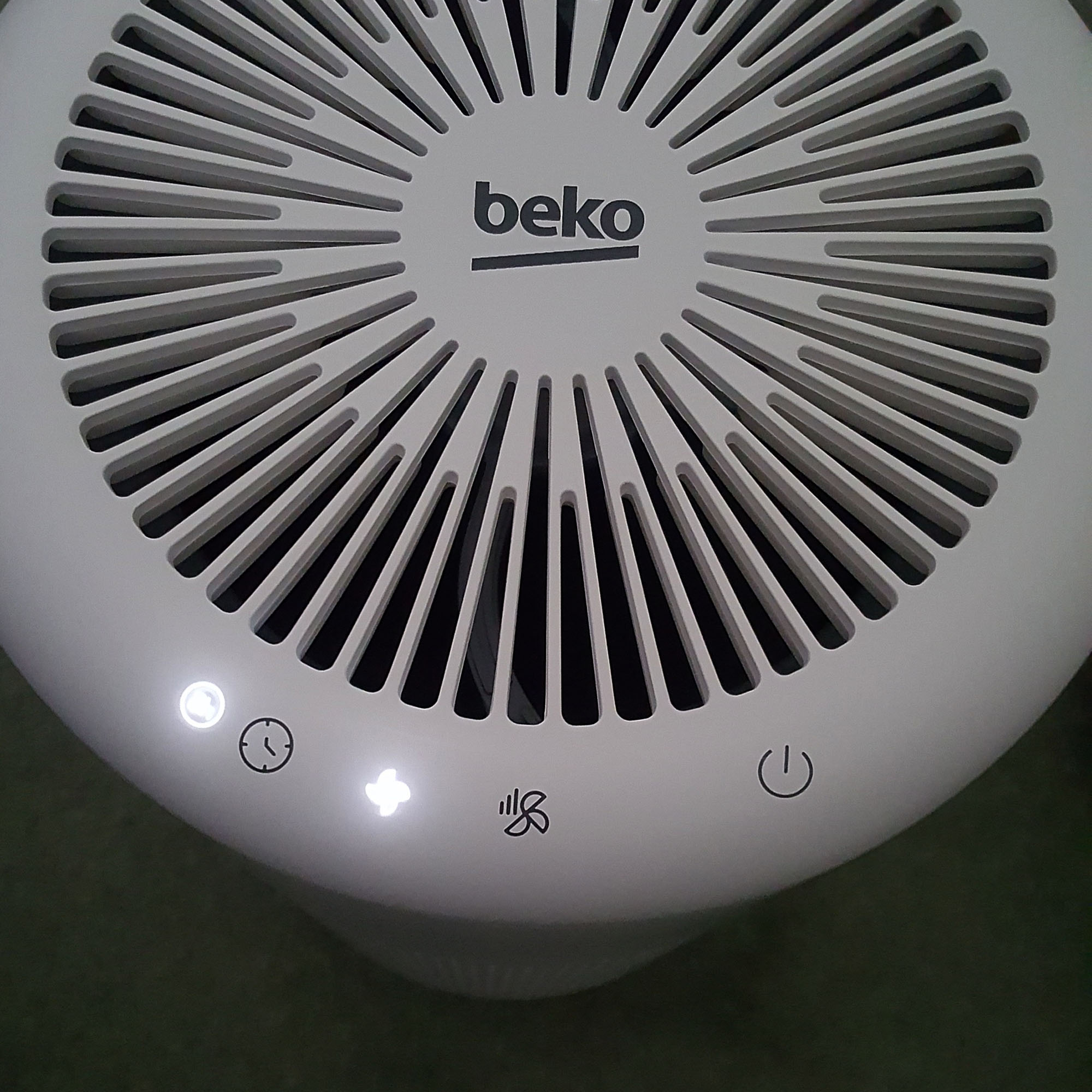
Verdict
In my opinion, the main selling point of the Beko ATP5100I Air Purifier is its price. At well under £100, it's an affordable air purifier with relatively cheap ongoing costs thanks to its reasonably priced air filters.
However, the ATP5100I's budget price tag is only made possible due to its low CADR, less powerful filtration meaning it can only purify the air in a space under 13m2, and its basic functionality. Most notably, that affordable price ticket means a lack of built-in air quality sensor, a lack of automatic mode, and a lack of Wi-Fi connectivity.
Unless you need an air purifier that can be operated remotely via an App, or connected to a voice-activated device, or you want the detailed air quality insights that tend to come with Smart App integration, then the lack of Wi-Fi connection might be 'nice to have' that's worth sacrificing to save money.
However, in practice, I found the lack of air quality sensor and automatic mode a real hindrance to air quality management, and in some ways a false economy. If you can, I think it's well worth paying extra for a model – like the Blueair Blue Max 3250i Air Purifier – that has both of these features so that you can sit back and let the air purifier do its thing. Automatic mode also means lower energy usage and therefore reduced ongoing running costs.
That said, if affordability is the main criteria in your search for an air purifier, and as long you don't have a space larger than 13m2 (if you do, then the AEG AX91-604GY Connected Air Purifier is our top choice for filtering large spaces and open-plan homes), then the Beko ATP5100I Air Purifier does do the job.
You can whack the ATP5100I on whilst cooking dinner, when grass pollen is at its peak, or in a smoky environment, and, it will help to clear the air. It's just a shame that you don't get any air quality data – beyond your own nose or itchy allergy-prone eyes – to help you ascertain when to turn the Beko ATP5100I Air Purifier on and when to turn it off.







